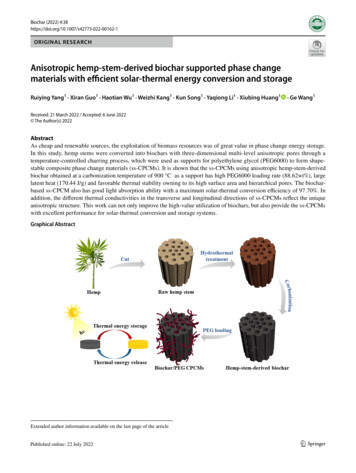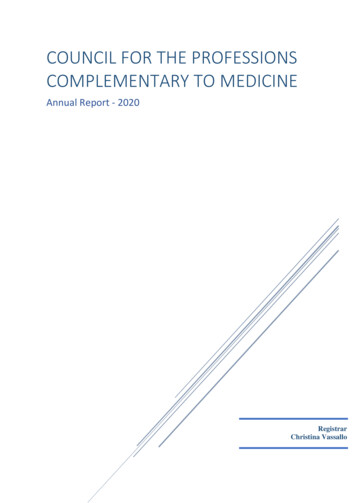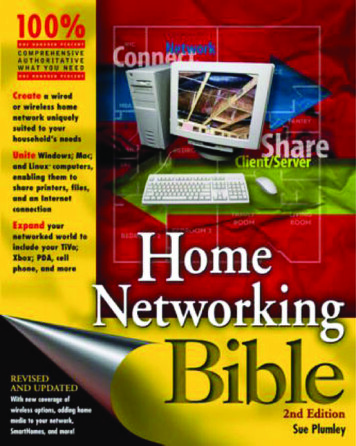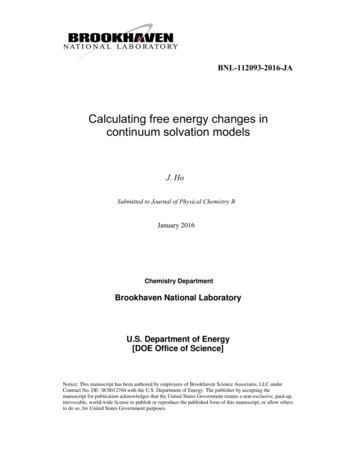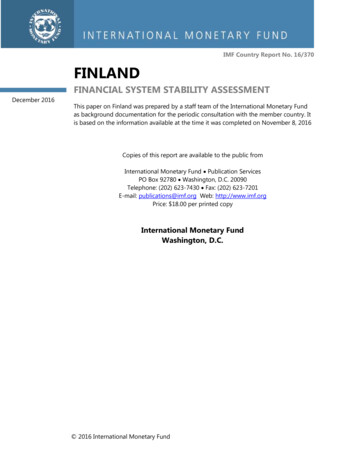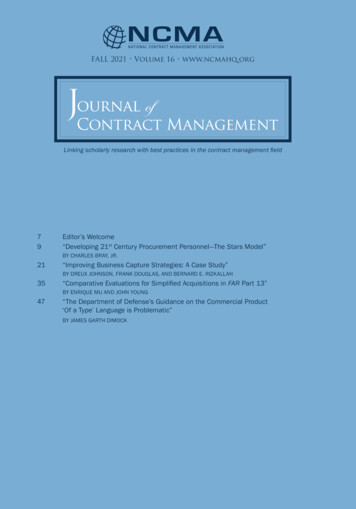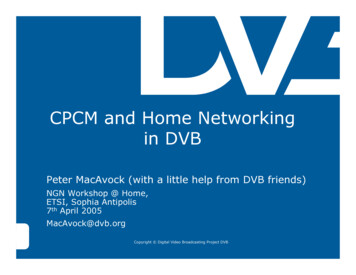
Transcription
CPCM and Home Networkingin DVBPeter MacAvock (with a little help from DVB friends)NGN Workshop @ Home,ETSI, Sophia Antipolis7th April 2005MacAvock@dvb.orgCopyright Digital Video Broadcasting Project DVB
20 minutes of your time .DVB and digital televisionwhy you’re listening to me .What our plans are .Home networkingCPCMChallengesConclusionsnow doesn’t that sound exciting!
DVB and ETSIDVB is an industry initiative – NOT a standardsbodyAll DVB outputs are standardised viaEBU/ETSI/CENELEC JTC BroadcastDVB standards regularly top the list of populardownloads from ETSI’s siteDVB considers there are approx. 100 millionDVB receivers in the marketMembers group all sectors of the televisionindustryDVB works by consensus based on strict IPRrules
In the beginning .Broadcast.FixedTelecomWirelessTelecom
But we’re converging .It has taken a long time to understand whatconvergence means .DVB has focused attention of making itsservices available across any access networkBut there are gapsHome networking is becoming more importantA harmonised solution to copy management andcontent protection is also importantDVB doesn’t have all the answersClose co-operation required with other bodies, e.g.DLNA, OMA, etc.Let’s not re-invent the wheel .
DVB 2.0 . next stepsBroadcastDVB in IPIP in DVBFixedTelecomDVBGSM/UMTS.WirelessTelecom
Content ProtectionCopy ManagementCPCM is“an end-to-end Content Protection & CopyManagement system implemented inconsumer digital products and networks toenable the authorised usage and redistributionof content (video, audio, text and data)”DVB CPCM Looks at how to allow consumersto copy content, rather than preventing itaddresses usage cases not covered by existingsystemsCONTENT may be constrained within an AuthorisedDomainAUTHORISED USAGE meta-data is tightly bound tothe content and is called Usage State Information(USI)
Scope of DVB CPCMBroadcastSecond HomePortable DevicesInternetMain HomePackagedMediaIn-Car Devices& Network
DVB CPCM – the ultimate aim“CPCM will be specified in terms of a set oftechnologies, interfaces and USI by whichapproved implementations will be able tointeroperate” and will not be specified in termsof “a single technology”.Finalise the reference modelCompliance testing?A first phase is due for completion in Q3 ‘05
Home Networking in DVBDVB recognised the importance of HomeNetworking – particularly “wirless”Previous initiatives were dogged by difficultiesin reaching consensus between DVB membersActivities re-started and has become one ofmonitoring the many efforts of other bodies,e.g. DLNADVB certainly doesn’t plan to invent newhome networking protocols .
Responsible standardisationwhat we SHOULD be doing .Standardisation should add valueDon’t invent a new technique for the sake of it.Home networking requires morecommunication than innovationLots of work going on, solutions could simply bereferencing other’s effortsContent Protection Copy Management is a bigDVB work itemIt’s taken ages to start achieving resultsPhase I set of specs. expects towards end Q3 ‘05
DVB-HDVB-Hbroadcast network ralModelIBDTVMuxDVB-TtransmitterDVB-THI BOMobileterminalIMTCo-operation PlatformDVB-UMTSIIISPI MOCorenetworkUMTSbase stationmobile operatorUMTSPowerconsumptionis key !!!!
Mobile TVtrials inJapanusingISDB-TThis is the battery .Power consumption is one of the biggest problemsyou must address in any handheld environmentDVB-H has a solution .
Work items in the coming yearDVB-H & IPDC Biggest work area at present in DVB. Finalisingall the elements to facilitate DVB-H services:Service protection and provisionService discovery and programme guidesIPDC specifications(Q3 – 2005)DVB-CPCMDifficult to achieve consensus in the ContentProtection, Copy Management area, buteveryone is involvedResults expect toward end Q3 – 2005 . wehope.Home Networks Was a big activity in 2-3 years ago, but littleconvergence between members. Now a big topicagain – close liaision with organisations workingin the area required, e.g. DLNAMaintenanceContinued work finalising:DVB-S2DVB-RCSValidation work on DVB-H
Analogue TV in mobile handsetsWorld’s first GSM TVphoneSeptember 2003Difficult to reduce handsetpower consumption, so batterylife is shortReceiver performance in amobileenvironment (doppler/multipath)is poorFree-to-air services only:unattractive business model forwireless carriers. a digital solution is required
TV over 3G networks3G networks (UMTS/WCDMA/CDMA2000)support video services at about 300kbit/sBut video services consume 10x the capacity ofvoice services. Pricing for video below about 10cper minute is unattractive for operators, evenbefore content costs are consideredIf people watch about 3 hours of television perday and just 10% of viewing switches to mobile,this would still be over 500 minutes per month 50 per month (500 minutes @ 10c/min) is tooexpensive for most consumers. a cheaper solution is required
What the DVB Project actually looks like.Technical Group ChairmanUlrich Reimers (Germany)Technical Group SecretaryPeter MacAvock (Ireland)
How we work .Use existing technologies where possible .DVB doesn’t want to re-invent the wheelWork by consensus .All sectors of the industry are in DVB, and the MUSTALL agree on any new DVB specificationsIntellectual Property Rights .DVB must respect the rights of the IPR holdersDVB must also insure that its standards can beimplemented at reasonable costIPR safeguards are an important part of DVB, arealso important for Chinese industry
DVB 2.0 .BroadcastDVB in IPIP in DVBFixedTelecomDVBGSM/UMTS.WirelessTelecom
Abstract Functional EntitiesAcquisition Point(AP)Imports content to CPCM, optionally alsobinds it to an ADStorage Entity(SE)Stores content inside CPCMProcessing Entity(PE)Performs some operation on content insideCPCMConsumption Point(CP)Unbinds content from CPCM forconsumptionExport Point(EP)Unbinds content from CPCM for otherpurposes
Content, Functional EntitiesC.1 Input ContentCPCM SystemF.1 AcquisitionAPF.2 StorageF.3 ProcessingC.0CPCMContentSECPPEEPF.4 ConsumptionC.2 ConsumedContentF.5 ExportC.3 ExportedContent
CPCM is "an end-to-end Content Protection & Copy Management system implemented in consumer digital products and networks to enable the authorised usage and redistribution of content (video, audio, text and data)" DVB CPCM Looks at how to allow consumers to copy content, rather than preventing it addresses usage cases not covered by existing .
